It might not be quite as cute as its newly launched all-electric Renault 5 stablemate, but the reborn, fully electric version of the classic Renault 4 certainly looks good enough to rekindle the flame of one of Renault’s best-selling cars ever, and is definitely the star of the Paris Motor Show this year. The original 4, during its long production life, found more than eight-million homes. Can the new electric 4 E-Tech replicate that?
It probably won’t but then it probably doesn’t have to – the 4 E-Tech’s biggest challenge will be reviving European car buyers’ interest in electric cars, something that senior executives from Renault and its big competitors at the Stellantis Group (home to both Peugeot and Citroën, not to mention myriad others) were predicting might well be at a turning point.
[ European carmakers plan dozens of cheaper models to survive ‘EV winter’Opens in new window ]
Thierry Koskas, head of the Citroën brand, said: “We may be getting close to a tipping point for EV demand.”
That tipping point is apparently coming closer thanks to the reductions in prices for new EV models. Citroën, while showing off a concept version of a new C5 Aircross SUV, which will go on sale next year at a cost of about €45,000, will more significantly finally put its all-electric e-C3 compact electric hatchback on sale shortly, having endured long delays in getting the car’s software ready for production. The e-C3 should have a starting price of close to €23,000, and Citroën is planning an even more affordable version than that to follow.
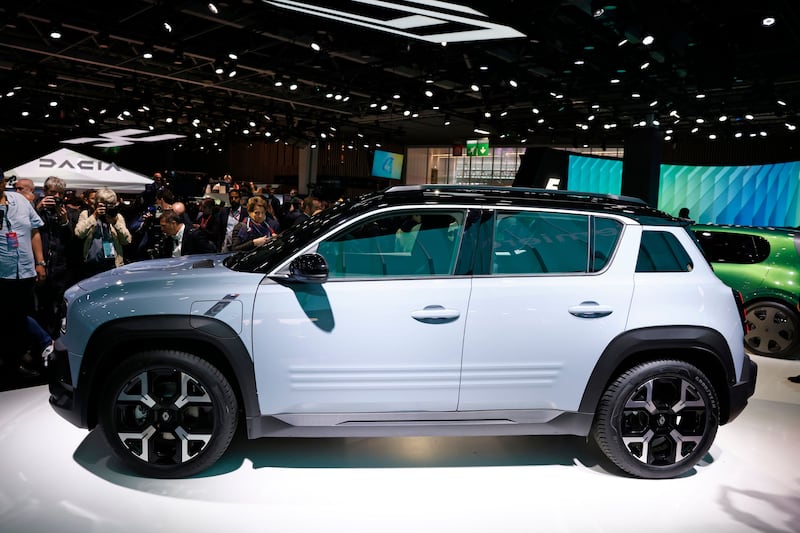
It won’t be alone in the cheap EV world. At the Paris show, Renault was showing off more than just the new 4 E-Tech. It also had the concept version of a new Twingo electric city car on display, shown to journalists earlier this year but making its public debut in Paris. Renault projects a price of less than €20,000 for the Twingo when it goes on sale in 2026, but alas right-hand-drive production has not yet been confirmed. The super-cute original 1991 Twingo was never made for the Irish or UK markets. Let’s hope history doesn’t repeat itself.
The Renault 4 E-Tech won’t be so cheap, but it should slot into a similar €35,000 bracket alongside the likes of the Jeep Avenger and Kia EV3. The retro styling isn’t quite as endearingly cute as that of the revived Renault 5 E-Tech, but it’s still a reasonably handsome update of the classic 1960s style, and it’s rather more enticing at which to look than the forgettable Captur crossover, alongside which the 4 E-Tech will sell. Indeed, that is perhaps Renault’s big contribution to making electric cars more sellable to European buyers – make them look cuter.
[ Renault revamps the Clio but is it better to wait for the new 5 EV?Opens in new window ]
Cute it might be, but just like its originator, the new 4 E-Tech will be practical. The boot measures a healthy 420 litres, while the front passenger seat folds down flat to allow you to load in boxes that are up to 2.2m long.
There will be a choice of battery sizes, allowing for ranges of 300km-400km, while the all-digital dashboard gets Google-based software. Sadly, there’s no re-creation of the classic Renault 4′s push-pull-twist gear lever, located in the dead centre of the dash, but one can’t have everything. Hopefully Renault Ireland will offer a special edition with classic P&T van orange-and-white livery.
Away from the Renault stand, the Paris show seemed healthier and more full of life than in recent years. Motor shows in general took a double battering from online reveals and Covid, but might the bigger manufacturer presence in Paris preview a return of the classic big show?
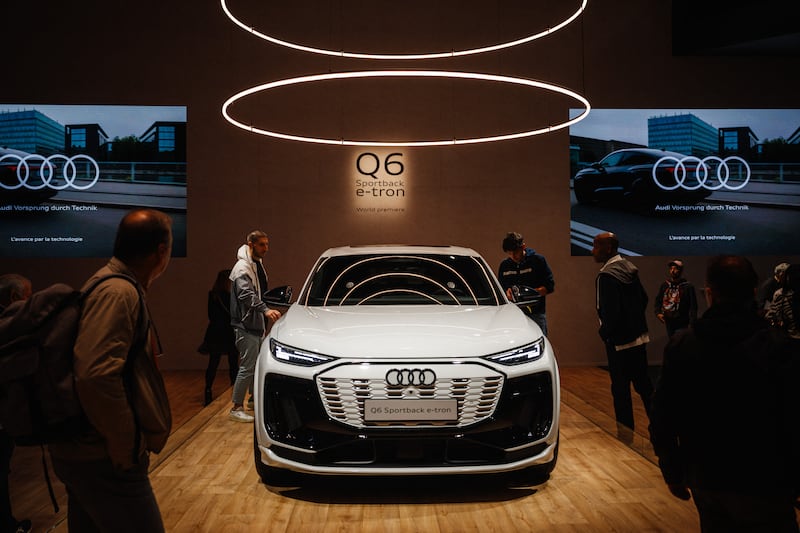
Certainly, there was plenty of new metal on sale, from the relatively straightforward (the reveal of a hybrid version of Alfa Romeo’s new Junior crossover, the sleeker Sportback’ version of Audi’s Q6 e-tron electric SUV boasting a 656km range, and the high-performance John Cooper Works versions of the electric Mini hatchback and the Mini Aceman crossover) to the more outlandish.
Outlandish means returning to the Renault stand, where the French giant was showing off the Emblème concept car, a low-slung crossover with more than just battery power. The Emblème is not merely a show pony but an exploration by Renault of how to reduce a car’s emissions by 90 per cent – not just when it’s being driven, nor even when it’s being charged, but in total, from cradle to grave. Renault claims that the Emblème would have a whole-life total emissions figure of just five tonnes of CO2, compared with the 24-tonnes of an electric Megane E-Tech hatchback.
The Emblème has an electric motor (the 220hp one from the Scenic E-Tech) and a battery (the 40kWh one from the entry-level version of the Megane E-Tech) which gives it a range, says Renault, of “several hundred kilometres”.
Because the hydrogen combines in the fuel cell with oxygen from the outside air to create an electric current, the Emblème’s only emission is water vapour
What about longer journeys? Well, that’s where hydrogen comes in. Renault, although something of a pioneer in the modern electric car game, has never quite given up on hydrogen and given the current flagging of public interest – in some markets anyway, notably Ireland and Germany – in electric cars, the French car maker might well be thankful for that bet-hedging.
Renault actually does have a production hydrogen vehicle on sale right now – a version of the new Master van – but the Emblème uses a 30kW hydrogen fuel cell as a range-extender for long runs. Fill it up with 2.8kg of hydrogen and the Emblème can drive for 350km before it needs refuelling, which takes just five minutes at a time.
That being the case, Renault claims the Emblème can drive from Paris to Marseilles in the same time as a regular combustion car, stopping twice along the way to top up with hydrogen. Because the hydrogen combines in the fuel cell with oxygen from the outside air to create an electric current, the Emblème’s only emission is water vapour.
Others have started to sense a possible shift back towards the potential of hydrogen power – BMW and Hyundai among them – so the Emblème could yet turn out to be a significant concept.
Renault-related Alpine was showing off its A390-Beta, a concept version of a sleek three-motor electric crossover that will go on sale next year and claims to offer some truly thrilling driving experiences.
Peugeot had brought along the new 425km-range all-electric version of the sleek 408 SUV, while it also had the big-battery versions of the new E-3008 and E5008, which gives the electric SUVs a range of up to 700km on one charge.
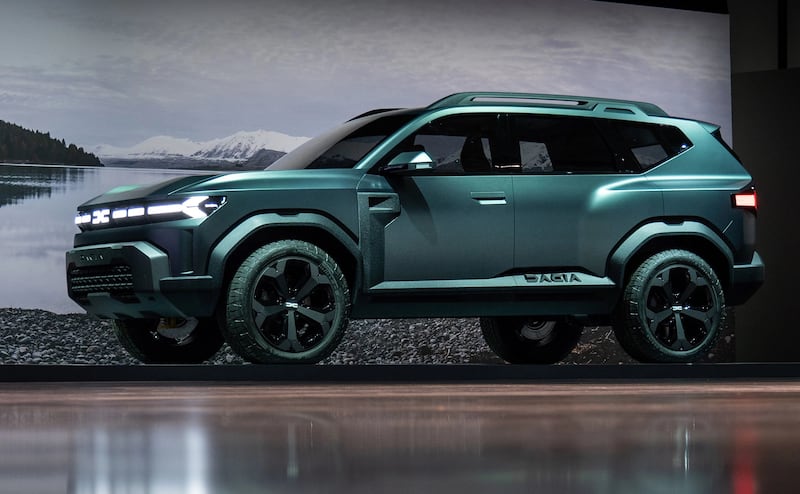
Dacia brought along the smart-looking Bigster, now in full production form and going on sale in early 2025 as the brand’s rival for the likes of the Hyundai Tucson and Toyota RAV4. Given Dacia’s recent successes, it’s hard not to see this handsome SUV being a huge hit. At the show, Dacia boss Denis Le Vot was also hinting at other, different, cars to come shortly in the same sort of size as the Bigster, including a possible practical family estate to take on the Skoda Octavia Combi.
As well as the C5 Aircross concept, Citroën also brought along an updated C4 and e-C4 hatchback, and a facelift for the dinky little Ami quadricycle (even though it’s only just gone on sale in Ireland, priced at €9,990) which aims to make it look even more.
Ominously for the European brands, China’s EV giant BYD was at the show, displaying the Sealion 7 electric SUV, which we saw in Beijing earlier this year. A sleek rival to the Tesla Model Y, the Sealion 7 arrives in Ireland in early 2025.
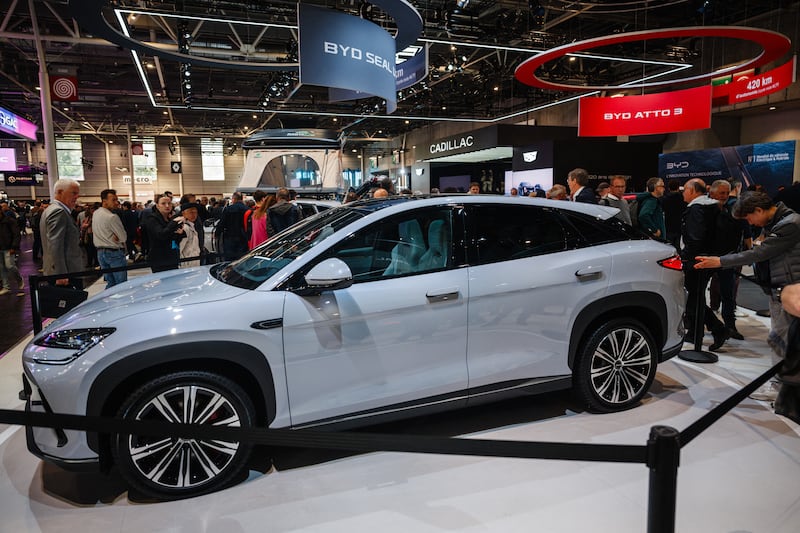
BYD is also arriving in Europe, and is about to open factories in Hungary and Turkey, neatly sidestepping the new European tariffs on Chinese electric cars, with first production set for the end of 2025. BYD – the most successful of the newly arrived Chinese brands in Ireland – did not flinch when it came to the new tariffs, which were originally levied at 17.4 per cent on BYD products, latterly reduced slightly to 17 per cent. So far, BYD hasn’t put up its prices, an action confirmed to The Irish Times as being thanks to an ability to draw from stock already landed in Europe.
Speaking at Paris, BYD’s executive vice-president Stella Li said: “As the world’s leading new-energy technology company, over the past 30 years, we’ve always believed in using innovation to make technology accessible. Innovation is in our DNA and we have the largest R&D team in the world, with more than 102,000 engineers and 11 research institutes across the globe. We keep setting new records as we progress; last month, we announced that our nine millionth new-energy vehicle rolled off the production line. It took 13 years to get from zero to one million. But from seven million to nine million took us only six months.” That’s a statistic that will make the corporate blood run cold in European car maker board rooms.
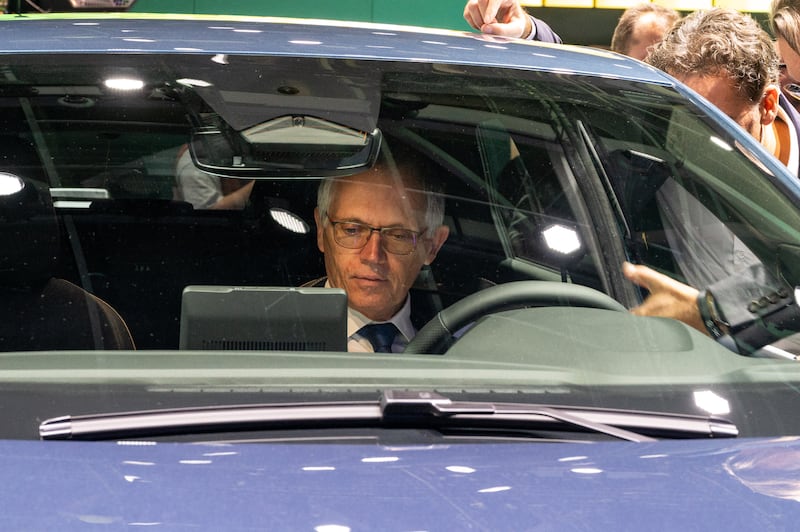
Indeed, while the Paris Motor Show was getting going, Stellantis Group was announcing some big corporate changes, following on the heels of the announcement that its totemic chief executive, Carlos Tavares, will not renew his contract when it runs out in 2026. Tavares has been effectively ousted in a palace coup organised by Stellantis’s European and US dealers, who are angry at slipping sales and an apparently mishandled EV policy.
[ Maserati is safe – for now – but will other Stellantis brands be shut down?Opens in new window ]
Meanwhile, back in Paris, Renault boss Luca De Meo – an outspoken critic of the EU’s extra tariffs for Chinese electric cars – was making the point that European and Chinese car makers must find a better, more balanced way to coexist and compete, not least because it’s from China that so many other car makers source their components, their batteries, and even their complete vehicles.
Classic European style, in the shape of that Renault 4 E-Tech, might have been the star of the Paris Motor Show, but the undercurrent was all about China.












